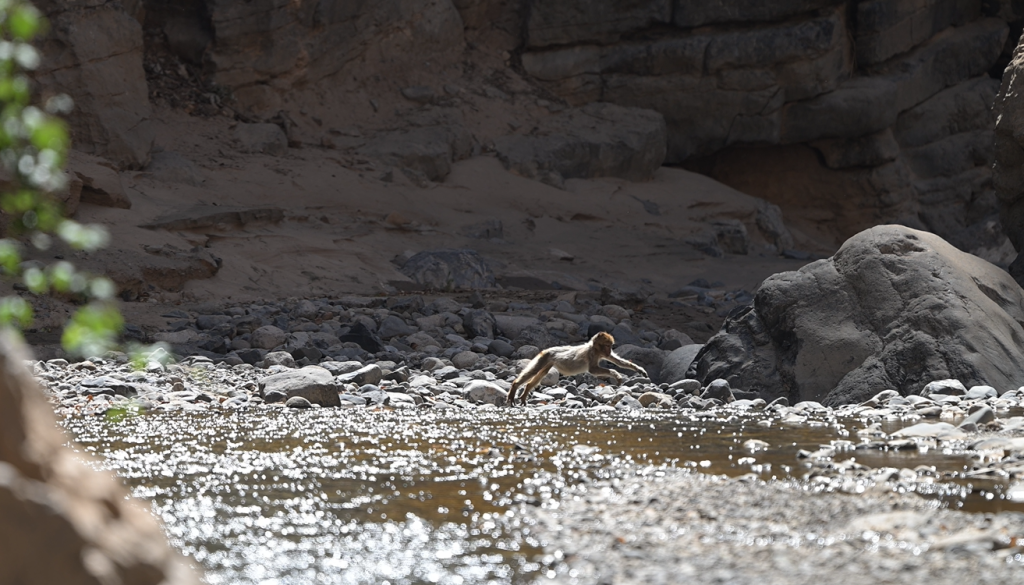Monkey Forest Visit Morocco on Conservation Visit
In the summer of 2024, Dr. Roland Hilgartner, Head of research and Director at Affenberg Salem (our sister park in Germany), embarked on a mission to Morocco to visit the Barbary macaques in their native habitats. The trip aimed to evaluate both the current presence of these primates and the success of reintroduction efforts from the 1980s. Roland’s journey was marked by both encouraging discoveries and concerning signs of ongoing challenges.
On June 14th, he visited the Ouzoud Waterfall, a picturesque site in the Grand Atlas village of Tanaghmeilt, where several social groups of Barbary macaques reside. The area’s natural beauty draws many tourists, leading to interactions between humans and monkeys. Tourists can feed the monkeys with peanuts, which can lead to conflicting situations, because tourists are close to monkeys.
After Ouzoud, he traveled to Boutferda, the site of a successful reintroduction of monkeys, from our sister parks in France & Germany, in the 1980s. After a challenging two-hour trek, he located two monkey groups high in the canyons. While the sighting was promising, evidence of goats and shepherds in the area indicated ongoing competition for resources, highlighting the pressures these macaques face in the wild. Roland is very happy to have found monkeys at the reintroduction-site, as this means that they are the descendants of the reintroduced population.
Next, he visited the Ourika Valley, a rocky landscape 30 kilometers from Marrakech, home to several distinct groups of Barbary macaques. During his visit, he encountered three groups. One group, located near tourists, was being fed unhealthy food by visitors. Another group lived within an apple tree plantation, leading to conflicts with farmers as the monkeys foraged on their crops. The third group, the most isolated, remained in the remote rocky areas, largely avoiding human contact.
Finally, he concluded his research in Marrakech, where he encountered juvenile macaques, aged 2 to 4.5 years, being exploited as photo props in markets. These young monkeys were kept in chains and dressed in human clothes, their chance of a wild life suppressed for the sake of profit.
Conclusion
The findings from Dr. Roland Hilgartner’s mission in Morocco highlight the ongoing challenges in protecting Barbary macaques. Human-wildlife conflicts, habitat competition, and exploitation continue to threaten the survival of these remarkable primates.
To protect Barbary macaques, it is crucial to support conservation efforts. Individuals can play their part by being responsible tourists, avoiding interactions that harm wildlife, and supporting organisations dedicated to the conservation of endangered species. By raising awareness and taking collective action, we can help ensure a future where Barbary macaques thrive in their natural habitats.

